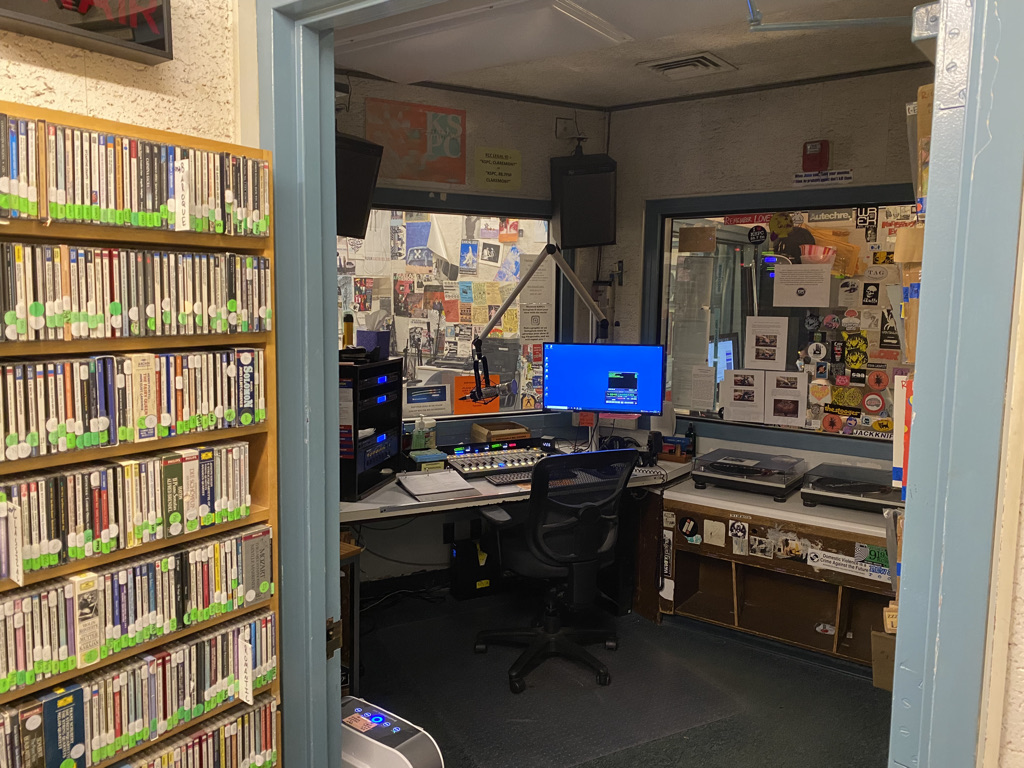|
WLCI-LP
WLCI-LP (97.5 FM) is a campus radio station licensed to Nelsonville, Ohio, United States. The station is currently owned by Hocking Technical College. WLCI-LP is a student-run station, based out of the Hocking College School of Music in Southeast Ohio. The station is operated entirely by students in the Hocking College School of Music Program. The license was cancelled on October 2, 2020, for failure to file a license renewal, but was reinstated on October 6, 2020, upon the Federal Communications Commission The Federal Communications Commission (FCC) is an independent agency of the United States federal government that regulates communications by radio, television, wire, satellite, and cable across the United States. The FCC maintains jurisdiction ... receiving the renewal application. References External links LCI-LP LCI-LP LCI-LP {{Ohio-radio-station-stub ... [...More Info...] [...Related Items...] OR: [Wikipedia] [Google] [Baidu] |
Radio Stations In Ohio
The following is a list of FCC-licensed radio stations in the U.S. state of Ohio, which can be sorted by their call signs, frequencies, cities of license, licensees, and programming formats. List of radio stations :1 Operating under a "Shared Time" agreement on the same frequency. Defunct * KDPM Cleveland (1921–1927) * W45CM/WELD Columbus (1941–1953) * WAQI/WAST Ashtabula (1964–1982) * WBKC/WCDN/WATJ Chardon (1969–2004) * WBBY-FM Westerville (1969–1990) * WBOE Cleveland (1938–1978) * WAND/WCNS/WNYN/WTOF/WBXT/WCER Canton (1947–2011) * WCLW Mansfield (1957–1987) * WCRX-LP Columbus (2007–2020) * WDBK/WFJC Cleveland; moved to Akron in 1927 (1924–1930) * WFRO Fremont (1950–2021) * WJDD Carrollton (surrendered in 2022) * WJEH/WGTR/WJEH Gallipolis (1950–2021) * WJTB North Ridgeville (1984–2017) * WKNT/WJMP Kent (1965–2016) * WJVS Cincinnati (surrendered in 2012) * WLBJ-LP Fostoria (2015–2020) * WLMH Morrow (cancelled in 2012) * WLQR ... [...More Info...] [...Related Items...] OR: [Wikipedia] [Google] [Baidu] |
Nelsonville, Ohio
Nelsonville is a city in northwest York Township in Athens County, Ohio. It is 60 miles southeast of Columbus. The population was 4,612 at the 2020 census originally, but an official citywide recount found the population to be 5,373, thus maintaining city status in the State of Ohio. It is the home town of Hocking College. Geography Nelsonville is located at (39.455167, −82.225650), along the Hocking River; Monday Creek flows through the eastern part of the city. One of the main streets, Canal Street, is located over where the old Hocking Canal once ran. According to the United States Census Bureau, the village has a total area of , of which is land and is water. Nelsonville is located on U.S. Route 33. A bypass was completed in December 2013 for the village. Demographics As of the census of 2010, there were 5,392 people, 1,969 households, and 920 families residing in the city. The population density was . There were 2,257 housing units at an average density of . The ... [...More Info...] [...Related Items...] OR: [Wikipedia] [Google] [Baidu] |
Ohio
Ohio () is a state in the Midwestern region of the United States. Of the fifty U.S. states, it is the 34th-largest by area, and with a population of nearly 11.8 million, is the seventh-most populous and tenth-most densely populated. The state's capital and largest city is Columbus, with the Columbus metro area, Greater Cincinnati, and Greater Cleveland being the largest metropolitan areas. Ohio is bordered by Lake Erie to the north, Pennsylvania to the east, West Virginia to the southeast, Kentucky to the southwest, Indiana to the west, and Michigan to the northwest. Ohio is historically known as the "Buckeye State" after its Ohio buckeye trees, and Ohioans are also known as "Buckeyes". Its state flag is the only non-rectangular flag of all the U.S. states. Ohio takes its name from the Ohio River, which in turn originated from the Seneca word ''ohiːyo'', meaning "good river", "great river", or "large creek". The state arose from the lands west of the Appalachian Mountai ... [...More Info...] [...Related Items...] OR: [Wikipedia] [Google] [Baidu] |
Watt
The watt (symbol: W) is the unit of power or radiant flux in the International System of Units (SI), equal to 1 joule per second or 1 kg⋅m2⋅s−3. It is used to quantify the rate of energy transfer. The watt is named after James Watt (1736–1819), an 18th-century Scottish inventor, mechanical engineer, and chemist who improved the Newcomen engine with his own steam engine in 1776. Watt's invention was fundamental for the Industrial Revolution. Overview When an object's velocity is held constant at one metre per second against a constant opposing force of one newton, the rate at which work is done is one watt. : \mathrm In terms of electromagnetism, one watt is the rate at which electrical work is performed when a current of one ampere (A) flows across an electrical potential difference of one volt (V), meaning the watt is equivalent to the volt-ampere (the latter unit, however, is used for a different quantity from the real power of an electrical circuit). : ... [...More Info...] [...Related Items...] OR: [Wikipedia] [Google] [Baidu] |
Federal Communications Commission
The Federal Communications Commission (FCC) is an independent agency of the United States federal government that regulates communications by radio, television, wire, satellite, and cable across the United States. The FCC maintains jurisdiction over the areas of broadband access, fair competition, radio frequency use, media responsibility, public safety, and homeland security. The FCC was formed by the Communications Act of 1934 to replace the radio regulation functions of the Federal Radio Commission. The FCC took over wire communication regulation from the Interstate Commerce Commission. The FCC's mandated jurisdiction covers the 50 states, the District of Columbia, and the territories of the United States. The FCC also provides varied degrees of cooperation, oversight, and leadership for similar communications bodies in other countries of North America. The FCC is funded entirely by regulatory fees. It has an estimated fiscal-2022 budget of US $388 million. It has 1,482 ... [...More Info...] [...Related Items...] OR: [Wikipedia] [Google] [Baidu] |
FM Broadcasting
FM broadcasting is a method of radio broadcasting using frequency modulation (FM). Invented in 1933 by American engineer Edwin Armstrong, wide-band FM is used worldwide to provide high fidelity sound over broadcast radio. FM broadcasting is capable of higher fidelity—that is, more accurate reproduction of the original program sound—than other broadcasting technologies, such as AM broadcasting. It is also less susceptible to common forms of interference, reducing static and popping sounds often heard on AM. Therefore, FM is used for most broadcasts of music or general audio (in the audio spectrum). FM radio stations use the very high frequency range of radio frequencies. Broadcast bands Throughout the world, the FM broadcast band falls within the VHF part of the radio spectrum. Usually 87.5 to 108.0 MHz is used, or some portion thereof, with few exceptions: * In the former Soviet republics, and some former Eastern Bloc countries, the older 65.8–74 MHz band ... [...More Info...] [...Related Items...] OR: [Wikipedia] [Google] [Baidu] |
Campus Radio
Campus radio (also known as college radio, university radio or student radio) is a type of radio station that is run by the students of a college, university or other educational institution. Programming may be exclusively created or produced by students, or may include program contributions from the local community in which the radio station is based. Sometimes campus radio stations are operated for the purpose of training professional radio personnel, sometimes with the aim of broadcasting educational programming, while other radio stations exist to provide alternative to commercial broadcasting or government broadcasters. Campus radio stations are generally licensed and regulated by national governments, and have very different characteristics from one country to the next. One commonality between many radio stations regardless of their physical location is a willingness—or, in some countries, even a licensing requirement—to broadcast musical selections that are not c ... [...More Info...] [...Related Items...] OR: [Wikipedia] [Google] [Baidu] |
Low-power FM Radio Stations In Ohio
Low power may refer to: * Radio transmitters that send out relatively little power: ** QRP operation, using "the minimum power necessary to carry out the desired communications", in amateur radio. ** Cognitive radio transceivers typically automatically reduce the transmitted power to much less than the power required for reliable one-way broadcasts. ** Low-power broadcasting that the power of the broadcast is less, i.e. the radio waves are not intended to travel as far as from typical transmitters. ** Low-power communication device, a radio transmitter used in low-power broadcasting. * Low-power electronics, the consumption of electric power is deliberately low, e.g. notebook processors. * Power (statistics), in which low power is due to small sample sizes or poorly designed experiments See also * Power (other) Power most often refers to: * Power (physics), meaning "rate of doing work" ** Engine power, the power put out by an engine ** Electric power * Power (social a ... [...More Info...] [...Related Items...] OR: [Wikipedia] [Google] [Baidu] |




